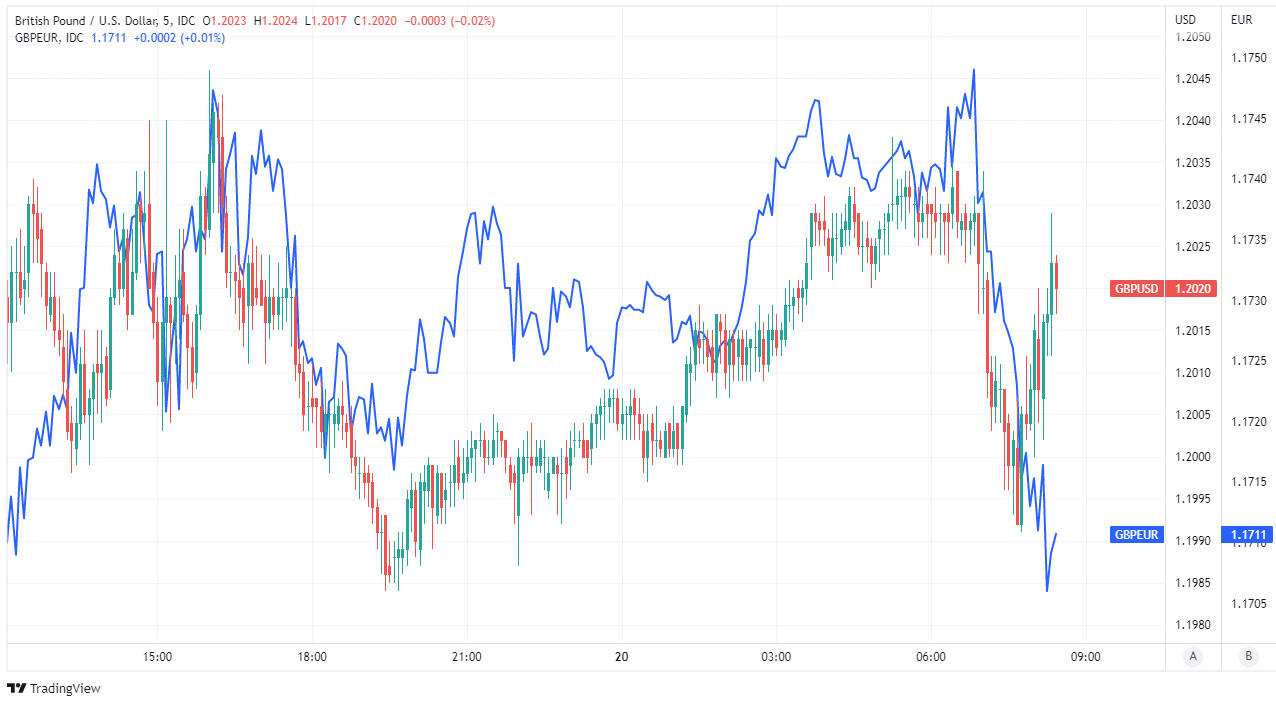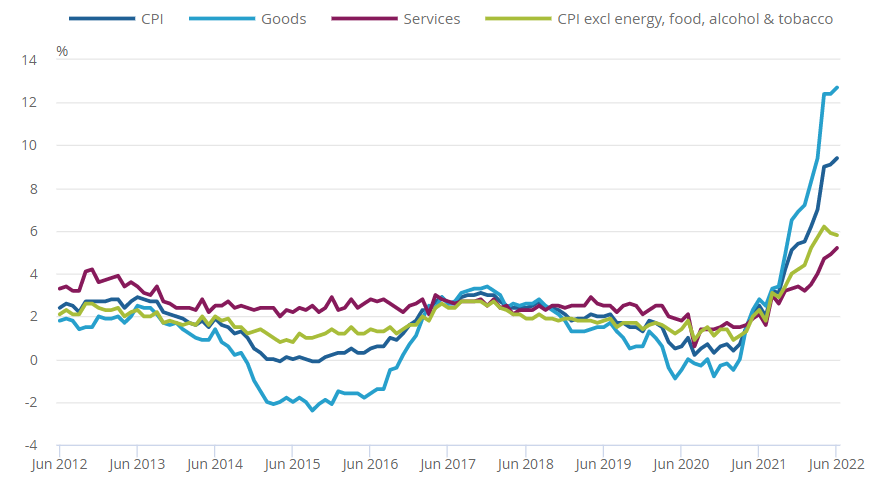UK Inflation Data Leaves Pound-Dollar Rate Propped Up by Softer USD
- Written by: James Skinner

Image © Adobe Images
The Pound dipped briefly against a softer Dollar on Wednesday after Office for National Statistics (ONS) figures revealed a new high for UK inflation but otherwise offered little sign of the "second round effects" that could catalyse a more aggressive interest rate response from the Bank of England (BoE).
While it was quick to recover, Sterling briefly handed some of its overnight gains back to a retreating Dollar at the London open on Wednesday after official data showed the UK inflation rate rising to 9.4% in June, from 9.1% previously.
That was higher than the 9.3% anticipated by consensus among economists but also mostly the result of further increases in energy and food prices.
The UK's core inflation rate, on the other hand, fell from 5.9% to 5.8% in line with expectations and it's this detail that may matter most for the BoE.
"Rising prices for motor fuels and food made the largest upward contributions," the Office for National Statistics said.
"Food and non-alcoholic beverage prices have risen by 9.8% in the year to June 2022, up from 8.7% in May, and the highest rate since March 2009," it added.
Above: Pound to Dollar rate shown at 5-minute intervals alongside Pound to Euro rate.
GBP to USD Transfer Savings Calculator
How much are you sending from pounds to dollars?
Your potential USD savings on this GBP transfer:
$318
By using specialist providers vs high street banks
With fuel and energy products aside, the largest increases in prices came from the food and non-alcoholic beverages category where milk, cheese and eggs were the biggest risers in June.
But some of the inflation in these categories was partially offset by declines in prices across other categories including those containing clothing and footwear as well as second-hand cars and audio-visual equipment, among other things.
These price declines would be a part of why core inflation slipped to 5.8% last month and that is itself why the data might do little, if anything, to make a more aggressive interest rate response from the BoE in August more likely.
"At the MPC’s last meeting we adopted language which made clear that if we see signs of greater persistence of inflation, and price and wage setting would be such signs, we will have to act forcefully," BoE Governor Andrew Bailey said at the Mansion House Financial and Professional Services Dinner on Tuesday.
"In simple terms this means that a 50 basis point increase will be among the choices on the table when we next meet. 50 basis points is not locked in, and anyone who predicts that is doing so based on their own view," he added.
Above: Various UK inflation rates. Source: Office for National Statistics.
GBP to USD Transfer Savings Calculator
How much are you sending from pounds to dollars?
Your potential USD savings on this GBP transfer:
$318
By using specialist providers vs high street banks
The BoE said in its June monetary policy decision that it would "act more forcefully" if it sees signs that recent increases in prices of energy and food are seeping into prices of other goods and services across the economy including the rates of wage and salary growth.
This is what is meant by the term "second round effects."
"The implied 2.9% rate of “underlying” services inflation is in line with its average rate in the 2010s, suggesting that Britain does not have a problem with domestically-generated inflation," says Samuel Tombs, chief UK economist at Pantheon Macroeconomics.
"Looking ahead, the further surge in wholesale electricity and natural gas prices over the last month suggests that Ofgem will increase its default tariff cap by an eye-watering 65% in October. This indicates that energy’s contribution to the headline rate of CPI inflation will soar to 6.0pp in October," Tombs added.
Wednesday's unchanged core inflation rate indicates that, in the June month at least, those second round effects were largely absent.
This is one candidate explanation for Sterling's reaction to the data on Wednesday, although the risk is that continuing increases in energy and food costs do eventually lead other prices to rise at a faster pace and potentially with knock-on effects for wage growth rates and BoE policy further down the line.







